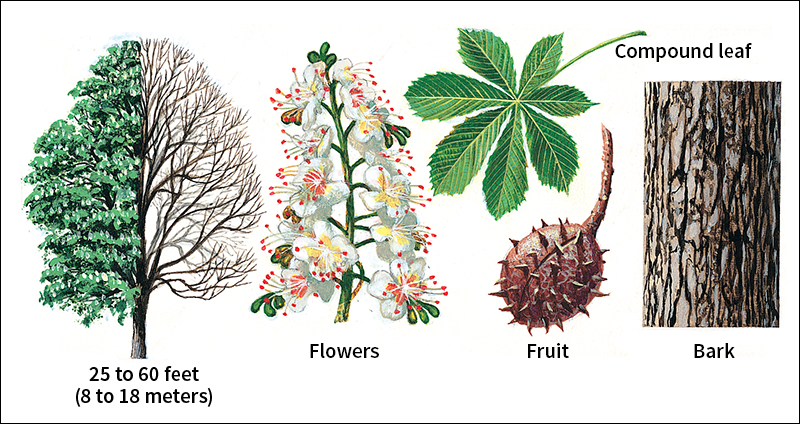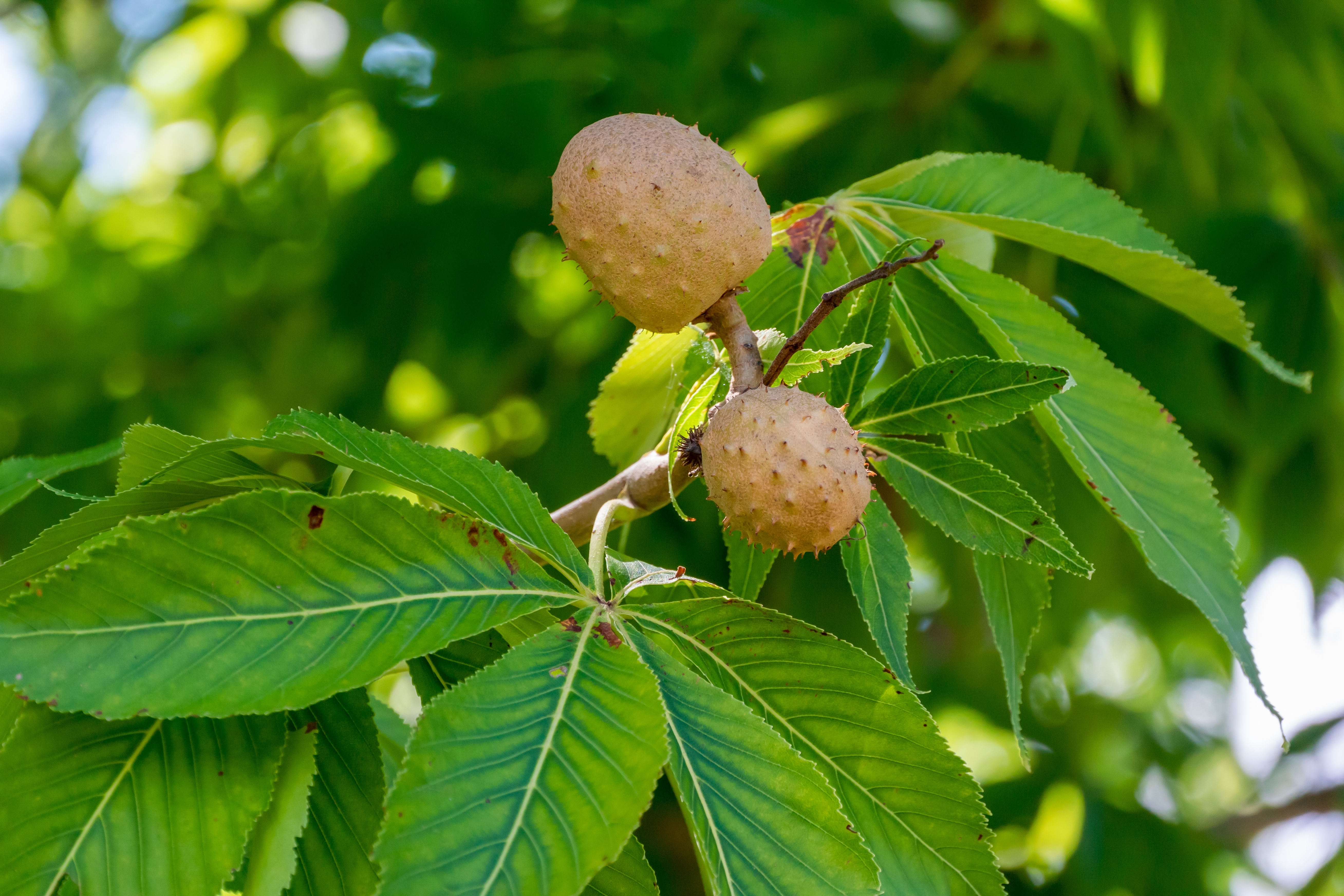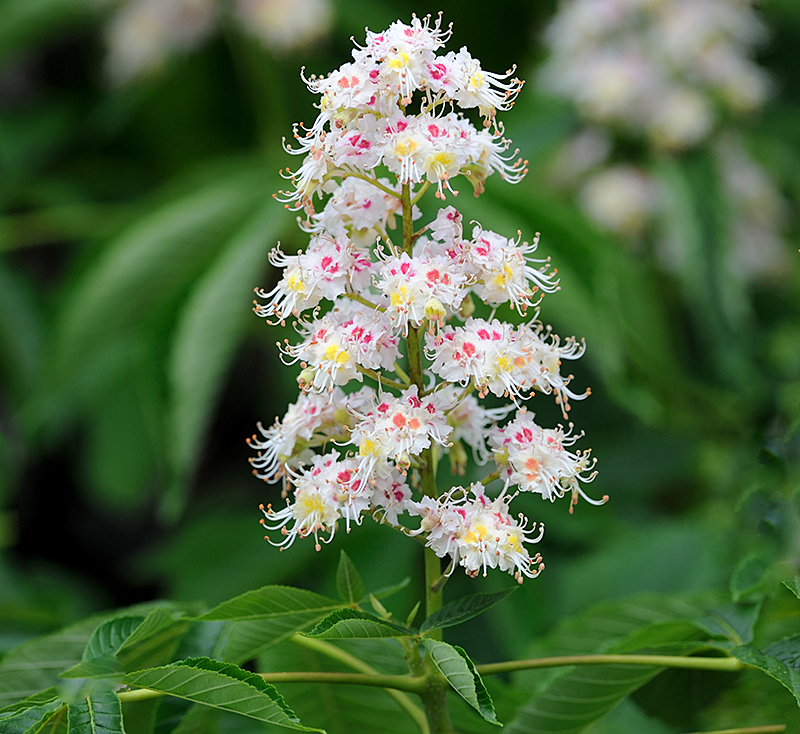Horsechestnut is a group of trees and shrubs native to North America, Europe, and Asia. There are more than a dozen species (kinds) of horsechestnuts. The most common of these is the European horsechestnut, which first grew in the Balkans region in southeastern Europe. The European horsechestnut now is planted in much of the Northern Hemisphere as a shade tree and for its showy flowers.


Species of horsechestnuts native to North America are called buckeyes. Their large seeds look like the eye of a buck (male deer). The Ohio buckeye is a medium-sized shade tree found from the southern United States to the Prairies of Canada. It is the state tree of Ohio and the reason for Ohio’s nickname, The Buckeye State. The yellow buckeye is common in parts of the central United States. The red buckeye is a shrub or small tree that grows in the Southern States. The California buckeye is found chiefly on the West Coast.
The flowers of horsechestnuts range from white to rose and yellow. They open in clusters in late spring or summer. The leaves consist of five to nine leaflets attached at a common point. The seeds grow in large, leathery capsules and measure up to 2 inches (5 centimeters) in diameter. They are bitter tasting and poisonous if eaten raw. However, Native Americans once cooked the seeds for food.

